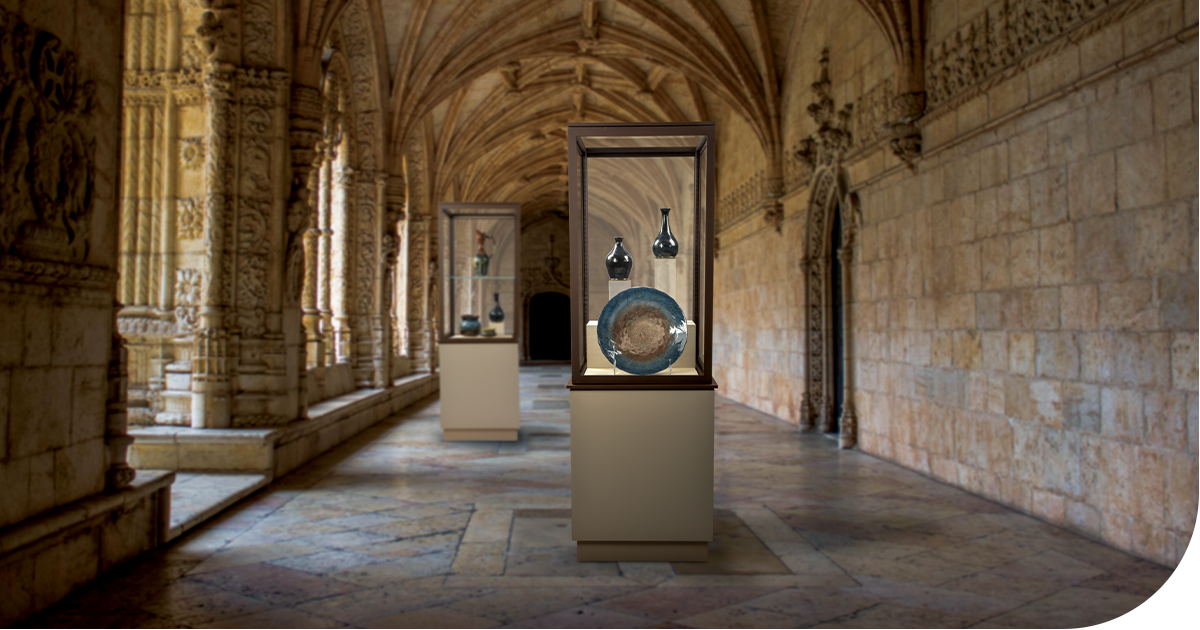Selecting the right material for your museum exhibit case—whether glass or acrylic—requires careful consideration of durability, cost, accessibility and conservation needs.
Glass excels in long-term exhibits, offering exceptional strength for large or high-value displays and a timeless aesthetic. Acrylic, on the other hand, stands out for its affordability, lighter weight and faster production, making it ideal for rotating or temporary exhibits and easier to handle or replace when needed. This guide provides a detailed comparison of both materials, highlights important features like maintenance, security and UV protection, and answers common questions to help you confidently choose the best solution for your museum’s unique requirements
Why Choose glass for Your Museum Exhibit?
Glass exhibit cases are the top choice for museums and galleries seeking long-term durability and a classic, professional look.
- Long-Lasting Protection: Glass is highly durable, making it ideal for permanent exhibits where objects will be displayed for years.
- Sleek, Timeless Aesthetic: Glass provides a clear, elegant appearance that suits traditional and contemporary museum settings.
- Loan and Security Requirements: Many institutions require glass cases for loaned or high-value objects, as glass offers enhanced security and meets conservation standards.
- Strength for Large Displays: Glass’s exceptional tensile strength makes it the best option for large or heavy exhibit cases, ensuring safety and stability for your collections.
Why Choose Acrylic Showcases for Your Museum Exhibit?
Acrylic exhibit cases offer flexibility, affordability, and convenience for a wide range of museum and gallery needs.
- Budget-Friendly: Acrylic is more affordable than glass, both in material and fabrication costs, making it an excellent choice for museums with tight budgets.
- Lightweight and Easy to Access: The lighter weight of acrylic makes it easier to move and access objects, perfect for rotating or temporary exhibits that require frequent changes.
- Faster Turnaround and More Options: With more fabricators specializing in acrylic and conservation-grade cases, you’ll enjoy a wider selection and quicker delivery times for your exhibit projects.
Choosing Between Glass and Acrylic: Key Features Compared
To help you choose the right material for your museum’s exhibit cases, this table compares the main features of glass and acrylic showcases. Use this guide to quickly assess cost, durability, security, and other important factors for your next project.
|
|
Glass |
Acrylic |
Cost |
Higher cost due to specialized manufacturing and materials. | Lower cost due to less complex fabrication and more widely available materials. |
Lead Time |
Longer lead time because of manufacturing complexity and limited suppliers. | Shorter lead time and easier to replace in emergencies due to more fabricators. |
Lifespan Range |
10-25+ years, ideal for permanent exhibits. | 2-10+ years,depending on type, environment and handling |
Size Limits |
Can be fabricated into very large cases. | Limited by thickness and bonding methods; not suitable for extremely large cases. |
Security |
Laminated safety glass stays intact; tempered glass shatters into small, safer pieces. | Shatter-resistant; stays in one piece if broken. |
UV Protection |
Tempered glass does not filter UV; laminated safety glass can be UV-filtering. | Available with or without UV-filtering options. |
Weight |
Very heavy, requires reinforced bases and careful installation. | Up to half the weight of glass, easier to handle and install. |
Case Accessibility |
Requires features like gas lifters and hinged doors to manage weight. | Easier to lift and remove, but requires careful handling to avoid scratches or damage; less rigid, so access methods may be limited. |
Cleaning |
Standard glass cleaner. | Requires special cleaners (e.g., Acrifix) to prevent scratches and reduce static. |
Maintenance |
Hinges, gas lifters and seals need regular maintenance. | Minimal maintenance beyond careful handling. |
Shipping Cost |
Higher due to weight and fragility. | Lower due to lighter weight. |
Ready to choose the right exhibit case?
Explore our full Exhibit Case Buyer's Guide for more expert advice!

